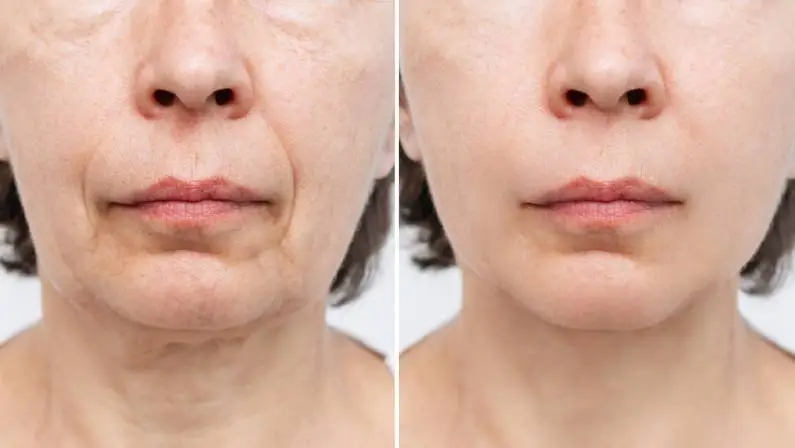Facelift procedures have established themselves as one of the most effective surgical interventions for reversing visible signs of aging in the face and neck areas. Clinical studies consistently show that a professionally performed facelift can remove up to 10-15 years from one’s appearance, with results remaining visible for an extended period. The longevity of a facelift varies significantly among patients, typically ranging from 7 to 15 years depending on several factors including the specific technique employed, the patient’s age at the time of surgery, genetic factors, lifestyle choices, and the quality of postoperative care. Research published in the Journal of Plastic and Reconstructive Surgery indicates that traditional SMAS (Superficial Musculo-Aponeurotic System) facelifts generally provide the most enduring results.
Table of Contents
The aging process continues even after a facelift procedure, which means that facial tissues will gradually return to their pre-surgery state, albeit from a more youthful starting point. Patient data demonstrates that individuals who maintain healthy lifestyle habits experience longer-lasting results. Avoiding sun exposure, following a balanced diet, refraining from smoking, minimizing alcohol consumption, and implementing a consistent skincare regimen significantly extend the longevity of facelift results. According to a longitudinal study tracking facelift patients over 10 years, those who adhered to these recommendations maintained 70% of their initial improvement at the decade mark, while those with poor habits retained only 40% of their results.
Understanding Different Types of Facelift Procedures
Facial rejuvenation procedures have evolved significantly over time, offering patients various options to address specific aging concerns. The traditional facelift remains a cornerstone procedure, but several specialized techniques have emerged to target different facial areas with varying degrees of invasiveness.
Traditional Facelift
- Comprehensive approach addressing the lower two-thirds of the face and neck
- Involves incisions beginning at the temples, extending around the ear, and ending in the lower scalp
- Full facelift procedure that repositions deeper facial tissues and removes excess skin
- Ideal for patients with moderate to severe facial sagging and jowling
- Typically performed under general anesthesia in a hospital or surgical center
Mini Facelift
- Uses shorter incisions around the ears
- Focuses primarily on the lower face and jawline
- Less invasive than a traditional facelift
- Best suited for patients with mild to moderate skin laxity
- Can be performed under local anesthesia with sedation
Midface Lift
- Targets the cheek and lower eyelid areas specifically
- Can be performed through lower eyelid incisions or endoscopically
- Addresses hollowing in the cheek area and prominent nasolabial folds
- Ideal for patients with minimal jowling but significant midface descent
- Often combined with other procedures for comprehensive rejuvenation
SMAS Facelift
- Focuses on the Superficial Musculo-Aponeurotic System layer beneath the skin
- Provides more natural and longer-lasting results than skin-only techniques
- Standard component of most modern full facelift procedures
- Addresses facial structure rather than simply tightening skin
- Requires specialized surgical expertise and precision
Deep Plane Facelift
- Advanced technique that works beneath the SMAS layer
- Releases ligaments that cause facial descent
- Particularly effective for addressing nasolabial folds and marionette lines
- Considered the gold standard for long-lasting results
- Requires greater surgical expertise and longer operating times
Thread Lift
- Minimally invasive alternative to surgical facelifts
- Uses specialized sutures to lift and suspend facial tissues
- Performed under local anesthesia as an outpatient procedure
- Best for patients with early signs of aging seeking subtle improvements
- Less dramatic and less permanent than what is a facelift surgical procedure
Facelift Recovery Timeline and Healing Process
The facelift recovery time varies for each patient, though most individuals follow a predictable healing trajectory. Medical professionals have documented this process thoroughly, allowing patients to prepare adequately for their recovery journey. The healing process occurs in distinct phases, each with specific milestones and recommended care protocols.
- Immediate Post-Surgery Phase (Days 1-3)
- Significant swelling and bruising is normal during this period
- Prescribed pain medication should be taken as directed
- Head elevation at 30-45 degrees helps minimize swelling
- Cold compresses applied intermittently reduce inflammation
During this initial phase, patients experience the most discomfort. Medical research indicates that the first 72 hours are critical for establishing proper healing foundations. Patients typically remain under close medical supervision during this time, with drainage tubes often in place for the first 1-2 days.
- Early Recovery Phase (Days 4-14)
- Suture removal typically occurs between days 5-10
- Bruising begins to fade, changing from purple to yellow
- Mild facial exercises may be introduced
- Transition from prescription to over-the-counter pain management
Face lift recovery time extends beyond the initial phase as tissues continue healing internally. By the end of the second week, most patients feel comfortable making brief public appearances, though residual swelling remains visible. Studies show that approximately 60% of visible swelling resolves by the two-week mark.
- Intermediate Recovery Phase (Weeks 3-6)
- Return to light physical activities is generally permitted
- Numbness and tightness gradually diminish
- Most external bruising resolves completely
- Sun protection becomes critically important
How long does a facelift take to heal completely? Clinical evidence demonstrates that by week six, approximately 80% of healing has occurred. During this phase, incision lines begin to mature and flatten, though they remain pink. The facial tissues continue to adapt to their new positioning, and sensation gradually returns to areas that experienced temporary numbness.
- Extended Recovery Phase (Months 2-6)
- Final results begin to emerge as residual swelling resolves
- Scar maturation continues with proper care
- Facial sensitivity returns to normal levels
- Full resumption of strenuous activities is typically permitted
Throughout the facelift recovery timeline, patients should maintain regular follow-up appointments with their surgeon. These evaluations ensure proper healing progression and allow for early intervention if complications arise. Research published in plastic surgery journals indicates that disciplined adherence to post-operative instructions significantly reduces recovery complications and improves overall outcomes. Face Neck Lift Turkey operations are often followed by questions like face lift how long does it last, highlighting the importance of understanding long-term outcomes. These insights underscore the value of regular follow-ups to optimize the longevity of the results and address any concerns promptly.
Risks and Complications of Facelift Procedures
Facelift surgery, while generally safe when performed by qualified surgeons, carries inherent risks and potential complications that patients should carefully consider before undergoing the procedure. Medical literature documents both common side effects and rarer, more serious complications associated with facial rejuvenation procedures.
Common side effects and complications of facelift procedures can be categorized based on their severity and frequency of occurrence. Understanding these potential outcomes is crucial for patients to make informed decisions about their aesthetic goals.
- Temporary side effects: Swelling, bruising, numbness, tightness, and discomfort
- Scarring issues: Hypertrophic scarring, keloid formation, and visible incision lines
- Nerve complications: Temporary or permanent facial nerve damage leading to asymmetry
- Hematoma formation: Collection of blood under the skin requiring prompt intervention
- Infection risks: Both superficial and deep tissue infections requiring antibiotics
- Skin necrosis: Death of skin tissue due to compromised blood supply
- Anesthesia complications: Adverse reactions to local or general anesthesia
- Hair loss: Temporary or permanent loss around incision sites
- Dissatisfaction with results: Aesthetic outcomes not meeting patient expectations
The following table compares the likelihood and severity of common facelift side effects based on clinical data:
| Complication | Frequency (%) | Severity | Recovery Timeline |
|---|---|---|---|
| Hematoma | 1-8% | Moderate-Severe | 2-4 weeks |
| Infection | 0.3-1.4% | Moderate-Severe | 1-3 weeks with antibiotics |
| Nerve Injury | 2-5% | Mild-Severe | 3 weeks to permanent |
| Skin Necrosis | 1-3% | Severe | 1-3 months |
| Scarring Issues | 1-2% | Mild-Moderate | 6-12 months |
| Anesthesia Reactions | <1% | Mild-Severe | Hours to days |
This data shows that while serious complications from facelift surgery are relatively rare, they do occur in a small percentage of cases. Hematoma remains the most common significant complication, requiring prompt medical attention when detected.
Patient-specific risk factors significantly influence complication rates in facelift procedures. Studies demonstrate that smoking increases complication risks by up to 12 times, particularly for skin necrosis and poor wound healing. Patients with conditions like hypertension, diabetes, or blood clotting disorders face elevated risks during and after surgery.
Medical literature emphasizes that surgeon selection plays a critical role in minimizing facelift complications risks. Board-certified plastic surgeons with specific facial plastic surgery training typically demonstrate lower complication rates compared to less specialized practitioners.
Prospective patients should undergo thorough medical evaluations before considering facelift surgery. This includes comprehensive blood work, medical history review, and honest discussions about expectations. The psychological impact of potential complications must also be considered, as facial changes can significantly affect self-image and emotional well-being.
Long-term Results and Durability of Facelift Surgery
Facelift results vary significantly based on individual factors and surgical techniques. The following elements influence how long a facelift lasts and what patients can expect in the long term.
Factors Affecting Facelift Longevity:
- Surgical Technique – Deep plane facelifts typically provide longer-lasting results than superficial techniques
- Patient Age – Younger patients generally enjoy longer-lasting results due to better skin elasticity
- Lifestyle Choices – Sun exposure, smoking, and weight fluctuations can significantly reduce longevity
- Genetic Factors – Hereditary skin quality and aging patterns influence how facial tissues respond over time
- Maintenance Practices – Regular skincare, non-surgical treatments, and follow-up procedures extend results
Essential Maintenance for Extended Results:
- Sun Protection – Daily SPF 30+ application prevents collagen breakdown
- Skincare Regimen – Retinoids and antioxidants support skin health
- Healthy Diet – Antioxidant-rich foods and adequate hydration maintain skin quality
- Stress Management – Reducing cortisol levels helps preserve collagen integrity
- Avoiding Tobacco – Eliminating smoking significantly improves long-term outcomes
| Facelift Type | Average Duration | How It Looks After 10 Years |
|---|---|---|
| Full Facelift | 8-12 years | Maintains 50-70% improvement |
| Mini Facelift | 5-8 years | May require touch-up procedures |
| Lower Facelift | 7-10 years | Jawline definition typically preserved |
The table above illustrates that a full facelift typically provides the most enduring results, with patients maintaining significant improvement even after a decade. Mini facelifts, while less invasive, generally require earlier revisions to maintain optimal appearance.
Research from the American Society of Plastic Surgeons indicates that how long a facelift lasts depends significantly on the patient’s continued aging process. While no procedure permanently stops aging, a well-performed facelift essentially “turns back the clock” by 7-10 years. Patients will always look younger than they would have without surgery.
Some exceptional cases demonstrate that a facelift can last 20 years with proper maintenance and genetic factors working favorably. However, most surgeons advise patients that secondary procedures may be beneficial after 8-12 years to maintain optimal results.
The investment in facial rejuvenation delivers substantial long-term value when considering that most patients continue looking significantly better than their pre-surgical appearance even a decade later. This lasting improvement in appearance often translates to sustained confidence and psychological benefits that extend well beyond the operating room.
At CK Health Turkey, we provide these advanced facelift solutions with our team of experienced and successful plastic surgeons. Our specialists customize recovery protocols to ensure optimal healing and long-term results for each patient. For comprehensive consultation and recovery expectations, patients can contact our clinic directly to schedule a personalized assessment.



